Discover the hidden temples of Himachal Pradesh, where ancient legends come alive amid the breathtaking Himalayan landscapes.
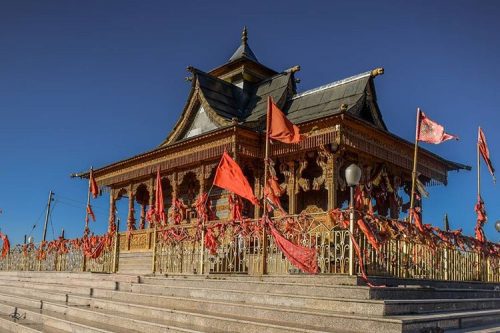
Himachal Pradesh, often referred to as the “Land of the Gods,” is renowned for its stunning landscapes and vibrant culture. Beyond its popular tourist destinations and well-known pilgrimage sites, the state harbours a treasure trove of hidden temples, each with its own unique story and mystical charm. These lesser-known sanctuaries offer a glimpse into the rich tapestry of history, architecture, and spirituality that defines Himachal Pradesh.
Imagine trekking through serene forests, only to stumble upon an ancient temple shrouded in local legends. Picture a temple so old and sacred that it stands without a roof, believed to have been built by the Pandavas during their exile. Or envision a shrine perched on a hilltop, where the Shivlinga is struck by lightning and miraculously restored by the priests. These are just a few of the enchanting tales that await those who venture off the beaten path in search of lesser-known temples in Himachal Pradesh.
The hidden temples of Himachal Pradesh, such as the Shikari Devi Temple in Mandi and the Bijli Mahadev Temple near Kullu, are not just places of worship but also architectural marvels set against breathtaking backdrops.
Join us as we explore ten of these captivating hidden temples, revealing the secrets and stories that make them extraordinary. Whether you’re a history enthusiast, a spiritual seeker, or an adventure lover, this journey promises to be a memorable and enriching experience.
Here are some hidden sacred sites in Himachal Pradesh that offer a perfect blend of historical exploration.
Shringa Rishi Temple
Located in the serene valley of Banjar in Kullu district, Himachal Pradesh, the Shringa Rishi Temple stands as a beacon of spirituality and history. Revered as the ruling deity of the Banjar Valley, Rishi Shringa’s presence is deeply embedded in the lore of this enchanting landscape, once his ‘tapa Bhoomi’ or meditation site.
Legend has it that a sacred stone, or ‘Pindi,’ in the dense forest of Skeeran, called out to passersby, compelling them to enshrine it in a temple. Answering this mystical summons, the villagers built a temple in Skeeran. However, the arduous journey to this remote sanctuary prompted them to construct another temple closer to home, in the village of Bagi. This new Shringa Rishi Temple, located 12 kilometres from the original site, seamlessly blends the traditional pagoda and Pahari architectural styles.
Adorned with exquisite wooden craftsmanship, the temple is a visual delight, while the brass and stone idol in the sanctum exudes a timeless aura. The deity, always enshrined in its chariot, commands reverence throughout the year, although the temple itself closes during the harsh winter months.
The Shringa Rishi Temple is not just a spiritual haven but also a magnet for tourists and devotees, drawn by the captivating natural beauty and the profound sense of divinity that pervades the region.
Bijli Mahadev
In the picturesque village of Kashawri in Kullu Valley, Bijli Mahadev Temple stands as a testament to ancient mysticism and enduring faith. Located approximately 20 km from Kullu, this revered shrine can be reached after a scenic 3 km trek. Renowned as one of India’s oldest temples, Bijli Mahadev is steeped in legend and awe.
Every 12 years, a mysterious phenomenon occurs: the Shiva Lingam within the temple is struck by lightning bolts. This celestial event, shrouded in mystery, causes the lingam to shatter into pieces. Yet, the temple priest, anticipating this divine intervention, meticulously gathers the fragments and reassembles them using a unique mixture of cereal, pulse flour, and unsalted butter.
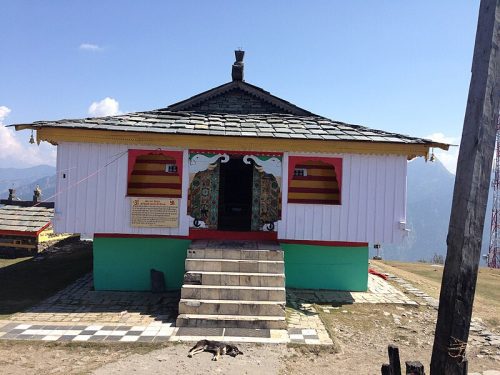
Remarkably, after several months, the Shiva Lingam is restored to its original form, whole and pristine. According to local lore, these lightning strikes are not random acts of nature but the will of the presiding deity, aiming to protect the region’s inhabitants from evil. This sacred site, with its intriguing legends and breathtaking surroundings, continues to draw both devotees and curious travellers alike.
Hatu Temple
Hatu Peak, located 8 km from Narkanda, offers a breathtaking journey through roads lined with pine and spruce trees. At the summit, visitors are rewarded with panoramic views of the majestic Himalayan ranges, snow-capped mountains, dense forests, verdant fields, and thriving apple orchards. Perched at the peak is the quaint wooden Hatu Temple, believed by locals to be dedicated to Mandodari, the wife of Ravana.
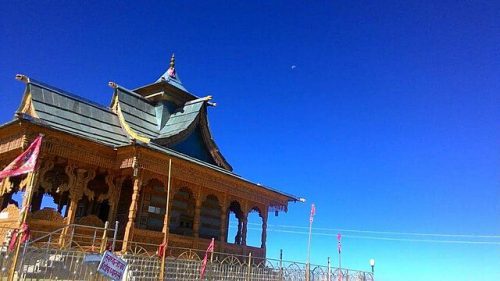
Every year, on the first Sunday of Jyeshtha, a large number of devotees gather to perform rituals at this sacred site, where goat sacrifice is still practised. Nearby, an ancient rock formation resembling a stove is believed to have been used by the Pandavas during their Agyaat Vaas, showcasing their legendary trekking prowess. Hatu Peak, with its rich blend of natural beauty and cultural significance, continues to be a cherished destination for travellers and devotees alike.
Renuka Ji
In the Sirmaur District of Himachal Pradesh, Renuka Ji is an unspoiled haven waiting to be discovered. Just 37 km from Nahan, it serves as the perfect weekend escape from the hustle and bustle of city life. Renuka Ji is renowned for its breathtaking Renuka Lake, the largest natural lake in Himachal Pradesh. Surrounded by dense, lush forests at an elevation of 672 meters, this serene lake spans an impressive circumference of about 3214 sq. km, offering a captivating and picturesque view.
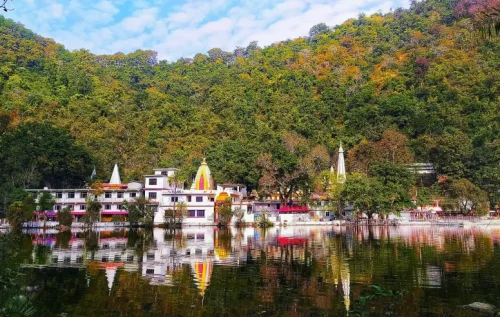
Named after the goddess Renuka, who took jal samadhi in Ram Kund Sarovar following the death of her husband, Rishi Jamdagni, the lake is believed to have formed in the shape of a lady, hence its name. Each year, Renuka Ji hosts a five-day International Fair during Prabodhini Ekadashi, which begins with the arrival of Lord Parshuram to the holy lake to honour his mother, Renuka. This event adds a vibrant cultural touch to the tranquil beauty of Renuka Ji, making it a must-visit destination.
Kathpol Tibba/ Baba Balak Nath Temple
Kathpol Ka Tibba, standing at 1936 meters, is the third-highest peak in Solan, Himachal Pradesh. It is home to the revered Baba Balak Nath Mandir, a temple perched majestically at the summit. This sacred site attracts pilgrims and trekkers alike, drawn by both its spiritual significance and the breathtaking natural beauty surrounding it.
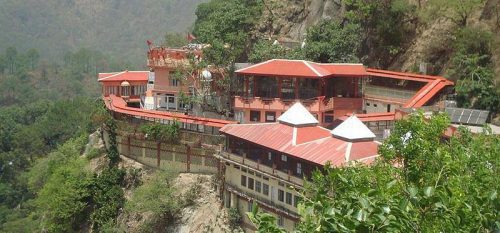
The climb to Kathpol Ka Tibba is a challenging yet rewarding experience. As you ascend, you are treated to panoramic views of the Satluj River and Shikari Devi, and glimpses of both cement factories nestled in the distance. The summit offers an awe-inspiring vantage point, with vistas that are nothing short of mesmerizing.
The Baba Balak Nath Mandir, believed to be a powerful spiritual centre, is complemented by a Dharamshala that serves as a resting place for visitors. The construction of this Dharamshala, despite the nearest road being two hours away, is a testament to the dedication and faith of the devotees. The serene and untouched beauty of Kathpol Ka Tibba makes it a must-visit destination for those seeking both adventure and spiritual solace.
Shikari Devi Temple
Shikari Devi Temple, located about 18 km from Janjehli and accessible via a jeepable forest road, sits majestically at an altitude of 3359 meters. As the highest peak in Mandi District, it is aptly known as the Crown of Mandi. The journey to Shikari Peak is a visual treat, with thick forests lining the way, offering a spectacular backdrop of natural beauty.
Nature lovers flock to this destination for its vast green pastures, captivating sunrises and sunsets, and panoramic views of the snow-capped ranges. The area receives a significant amount of snow during the winter months, adding to its allure. From Karsog, just 21 km away, Shikari Devi is easily accessible.
At the summit stands the roofless Shikari Devi Temple, dedicated to the Goddess of Hunters. According to legend, this temple was established by the Pandavas, and sage Markanday is said to have meditated here for many years. Intriguingly, despite heavy snowfall covering the region, the temple premises remain free of snow, a phenomenon that adds to its mystique.
Ardhnarishwar Temple
Located in Mandi, Himachal Pradesh, Ardhnarishwar Temple, a revered Hindu shrine, is highly esteemed by devotees. The temple is dedicated to Lord Shiva and his consort, Parvati. The name “Ardhnarishwar” signifies a deity that embodies both male and female aspects. In the temple’s stone image, the right half represents Lord Shiva, while the left half depicts Parvati.
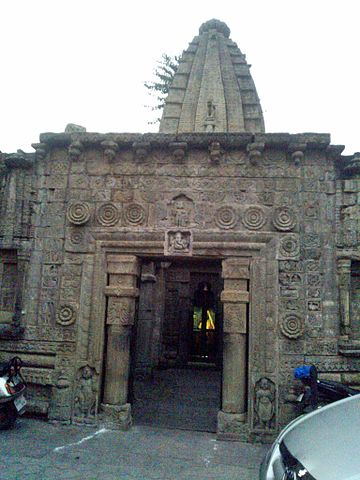
Visitors can embark on treks to Chindi, Karsog, and Janjehli from Shikari Devi, or take a day-long trek to Kamrunag, 16 km away. The hilltop route offers breathtaking scenic beauty and perfect tranquillity, making it a paradise for adventurers and nature enthusiasts alike.
Churdhar Temple
Churdhar Temple, located in the Sirmaur district of Himachal Pradesh, is perched at an impressive altitude of 3,647 meters, making it the highest peak in the outer Himalayas. Dedicated to Lord Shiva, this temple is a significant pilgrimage site, drawing devotees and trekkers alike.
The temple’s location offers stunning panoramic views, including the Churdhar Wildlife Sanctuary, home to diverse flora and fauna. The trek to Churdhar is an adventure, with routes passing through dense forests, lush meadows, and quaint villages. A notable feature is the 18-foot tall statue of Lord Shiva at the summit, exuding a serene and spiritual aura.
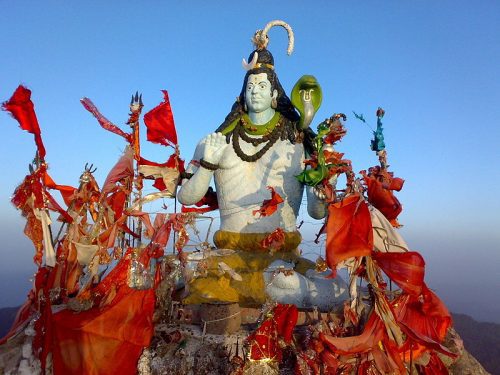
Legend has it that Churdhar is the place where Bhuri Singh, the king of Chamba, found his divine inspiration. The temple is also mentioned in the epic Ramayana, where it is believed that Churdhar was the place where Lord Hanuman found the life-saving Sanjeevani herb.
Narvadeshwar Temple:
Narbadeshwar Temple, located in the charming town of Sujanpur, was constructed by Maharani Prasanni Devi, the wife of Raja Sansar Chand. This 200-year-old temple is renowned for its exquisite wall paintings that adorn its interiors, enhancing its architectural beauty. Built-in the traditional Bhitti style, the temple’s arches and niches captivate every visitor’s eye.
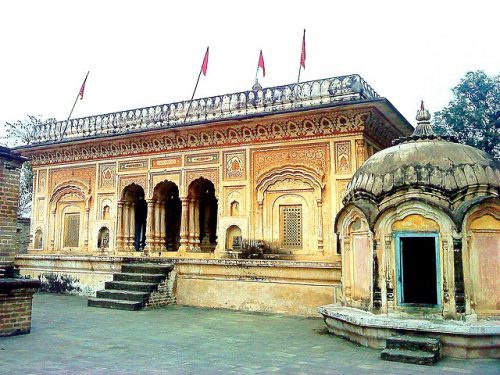
Surrounding the Narbadeshwar Temple are several other temples, each dedicated to various deities including Durga, Ganesh, Laxmi Narayana, and Mahisasur Mardini. These temples collectively create a spiritual haven, making Narbadeshwar not only a historical gem but also a vibrant centre of devotion and art. The intricate designs and historical significance of the temple complex continue to attract and inspire countless pilgrims and tourists alike.
Vashisht Temple
Vashisht Temple in Manali is a captivating blend of ancient architecture, natural hot springs, and deep religious significance. Dedicated to Sage Vashisht, one of the revered Saptarishis and the teacher of Lord Rama, this temple stands as a testament to Himalayan spirituality. Legend has it that Lord Rama and Sita meditated at this very site, imbuing it with profound historical reverence.
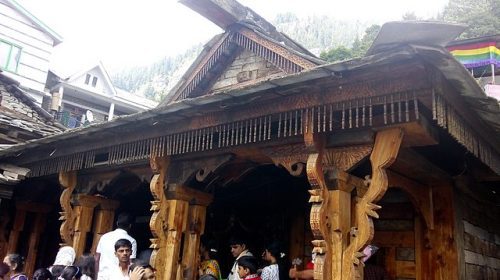
The temple’s architecture is a marvel, featuring intricate wood carvings and traditional Himachali craftsmanship. Its distinct pagoda-style structure, adorned with detailed woodwork, not only enhances its aesthetic appeal but also reflects sustainable building practices. Nestled in the scenic landscape of Manali, Vashisht Temple is a serene sanctuary that seamlessly blends heritage and nature.
The hidden temples of Himachal Pradesh offer an enchanting blend of history, spirituality, and natural beauty.
From the mystical Bijli Mahadev with its lightning-struck Shiva Lingam to the serene Shringa Rishi Temple nestled in Banjar Valley, each site tells a unique story. The roofless Shikari Devi Temple, the tranquil Renuka Ji with its picturesque lake, and the lofty Churdhar Temple all provide a deep spiritual experience amidst stunning landscapes.
These sacred sites, steeped in legends and surrounded by nature, invite visitors to explore the rich cultural heritage and serene beauty of this Himalayan region.
Read more: Latest



